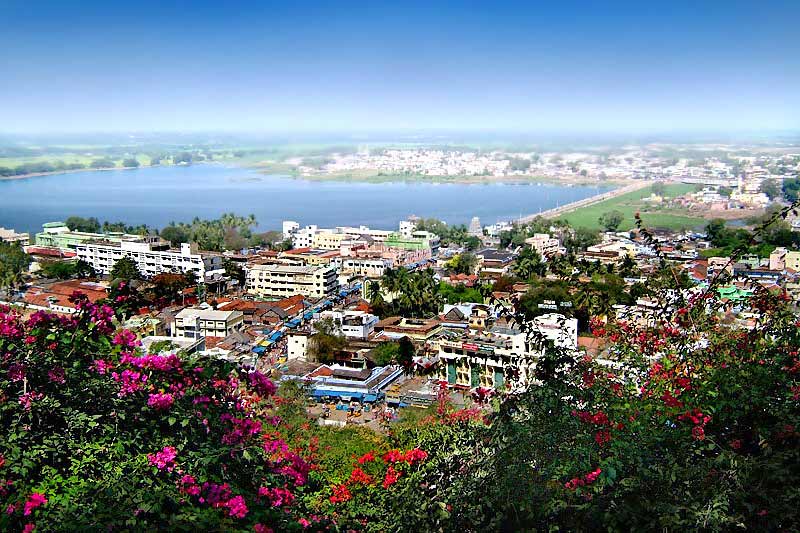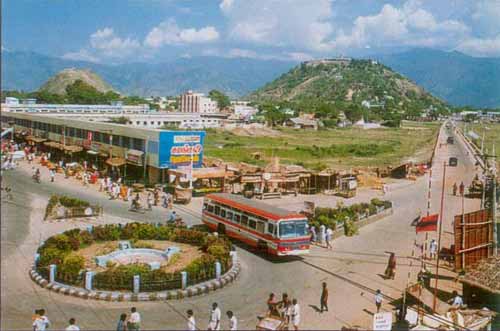
|
|||||||||||||||||||||||||||||||||||||||
|
| |||||||||||||||||||||||||||||||||||||||
Palani Town
Palani is a city and a municipality in Dindigul district in the Indian state of Tamil Nadu. It is located about 60 km from the city of Dindigul. It is a famous pilgrimage town and every year more than seven million devotees visit the Palani Murugan Temple and offer their prayers to Lord Murugan. This temple draws the largest number of devotees in Tamil Nadu. DemographicsAs of 2001 India census, Palani had a population of 67,175. Males constitute 51% of the population and females 49%. Palani has an average literacy rate of 75%, higher than the national average of 59.5%: male literacy is 81%, and female literacy is 69%. In Palani, 10% of the population is under 6 years of age. The most prominent festivals of Palani temple are Thaipoosam and Panguni Utthiram. GeographyA most impressive back-drop to the town is formed by the picturesque slopes of an offshoot of the Western Ghats, the Palani Hills, whereon lies the esteemed hill-station of Kodaikanal. The ranges extending east-west, to the south of the town, frame the town presenting a most inimitable sight. The view within the town is dominated by the two hills, Sivagiri and Saktigiri, on the former of which lies the famous and much resorted to temple of Lord Subrahmanyan as Bala-Dhandaayudhapaani ('young lord holding a staff'). At the foot of the hills lie several lakes, the largest of which, the Vaiyyapuri Kolam, used, in days past, to serve as the primary water reservoir to the inhabitants of the town. At its greatest expanse during and immediately after the monsoons rains, the lake drains to the Shanmughanadi, a short distance from the town. The Shanmuganadi, a tributary of the River Amaravathi, takes its source on the slopes of the Palni Hills and runs not very far from the town. On this river, a few short kilometres from the suburbs, in the lower reaches of the Palni Hills, is built the Varadhaman Nadi Dam, which supplies the town with its supply of fresh water. PeopleThe people of Palani, for the major part, belong to the Pillai and Pandaram castes, while there are numerous Nayakars (Naidus) in the nearby village of Balasamudram. Brahmins, although dispersed all over the town, have two particular enclaves - namely the Chinnakalyamputthur Agraharam, a short distance from the town, and the Gurukkal Street near the Periyanayaki Amman Temple. The language spoken is, for the most part, Tamil of the Coimbatore dialect with a strong infusion of the Madurai dialect, which may be attributable to the proximity of Dindigul, the district headquarters, where the latter dialect prevails. Nearest Tourist Information offices:
Nearest offices of Automobile Association of Southern India:
Industries of Palani: Textile mills, manufacture of panchamirtham, production of vibhuti (sacred ash), making of steel furniture at Govt. pressed metal factory, manufacture of fruit juices and of stone grinders. Shopping: panchamirtham, vibhuti, medals of Muruga, toys, handicrafts, pictures of the Lord, publications of the Devasthānam.
|

